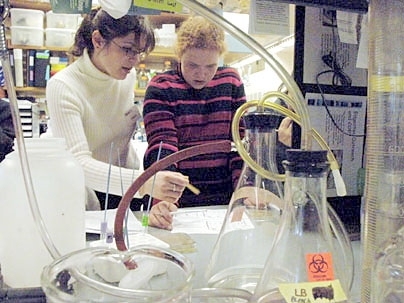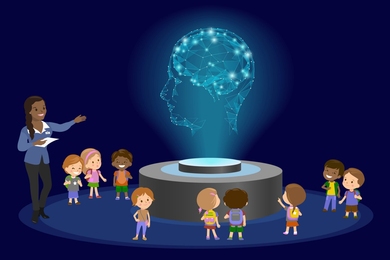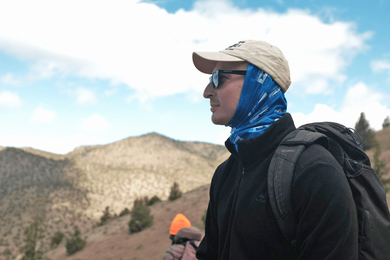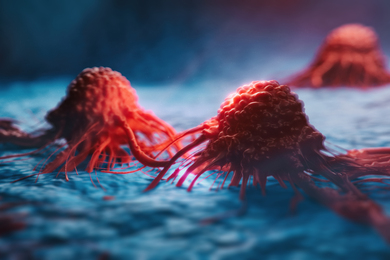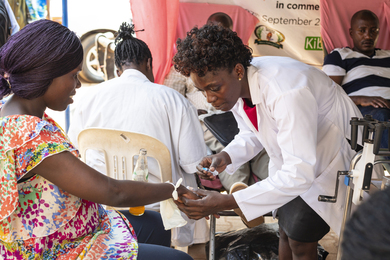"So we eat DNA?" one of the kids asks in mid-munch.
What a discovery.
Revolting, maybe, to someone who probably first heard the term "DNA" from a TV murder mystery. Or maybe kind of cool.
"Yeah," the middle-schoolers' tour guide, Lisi Meira, explains. "And not just in bread. In meat and all kinds of things."
An important lesson has been learned, right there in the conference room. And the young visitors haven't even finished their after-school snack of bread and butter and jam.
The boys and girls are part of Summerbridge, an after-school academic enrichment program offered by the Cambridge public schools. They're here on a field trip to learn something about the yeast that leavens bread and how zapping yeast cells with ultraviolet radiation affects their ability to reproduce.
Their guides at the Samson Lab in Building 56 will also be trying to connect the kids' observations of the yeast cells to larger environmental health issues. Beyond that, the youngsters will get a chance to see that a lab is a pretty cool place to work--and that people get paid for what they do there.
The Summerbridge program is part of MIT's ongoing academic outreach work, bringing in students from public schools in Cambridge and other communities and specifically trying to encourage them to consider and prepare for careers in the sciences.
"I'd like to introduce you to the organism you're going to be working on," Meira, a research scientist in the Center for Environmental Health Sciences, says as she begins her presentation to the kids. She plucks a hair from her own head--ouch!--to give the students an idea how tiny yeast cells are. However slender a hair is, the diameter of the shaft is still big enough to hold several yeast cells laid side by side.
Still, yeast cells have more in common with human beings than might be expected, Meira tells the kids. They have DNA, and their DNA is found in nuclei, just as in humans.
Meira suggests the students read the list of ingredients on food items at the supermarket to spot terms like "yeast" in bread, or "bacteria" in yogurt. That's when one of the students has a moment of realization: I've been eating DNA!
Then the kids go down the hall for the actual experiment. It involves irradiating two kinds of yeast--a mutant yeast and a normal yeast as a control group--inside a device that looks very much like a microwave oven. The more ultraviolet light the yeast gets, the worse it does at reproducing, the kids find. And the mutant yeast does particularly poorly.
The lab leaders make a connection between a basic cause--radiation--and an underlying predisposition--possibly weaker DNA in the mutant yeast. A comparison is made to people: Sunlight can give anyone a tan or a burn, but people who have an underlying predisposition to skin cancer will be most strongly affected.
Kathy Vandiver, director of MIT's Community Outreach and Education Core, explains in an interview that for today's public schools, the days when field trips could be justified on grounds of general "enrichment" are gone. "Field trips are much more tied to learning objectives," she says.
So she and her team work closely with the schools to make sure they're "providing a field trip experience that dovetails with the curriculum." Because teachers come along on the field trips, they benefit from exposure to ideas for new lesson plans. MIT's close cooperation with the Cambridge schools leads to programming "beautifully attuned to teacher need," Vandiver says.
New emphasis on science in state education requirements has left enrichment programs like Summerbridge hungering for more science content, Vandiver adds, noting that some 2,000 kids a year come to MIT through the Edgerton Center.
"It's not just more homework" that the kids need, Vandiver says. They need to see careers in science as potentially engaging and fun. "We need to keep their interest up, as well as their exam scores."
A version of this article appeared in MIT Tech Talk on January 10, 2007 (download PDF).
